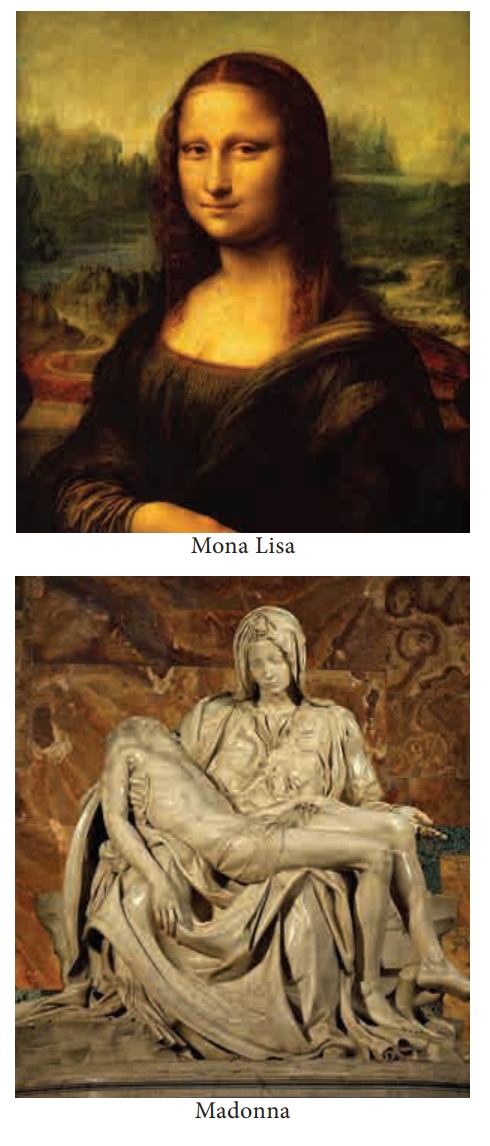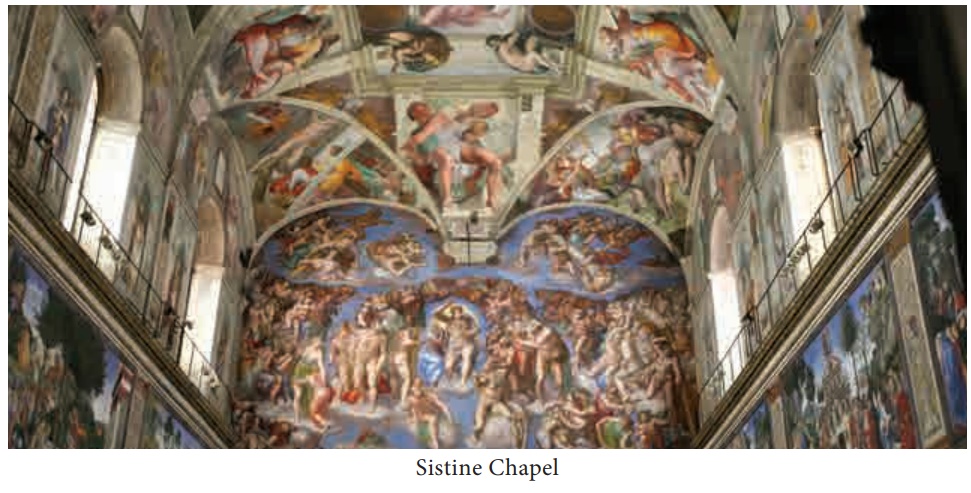The Beginning of the Modern Age | History - Renaissance | 9th Social Science : History: The Beginning of the Modern Age
Chapter: 9th Social Science : History: The Beginning of the Modern Age
Renaissance
Renaissance
The Italian city-states
were centres of cultural activities since the fourteenth century. With the
coming of the scholars and artists from Constantinople there was a surge of
enthusiasm and interest in studying classical literature and art of Greeks and
Romans in the Italian city states. This creative upsurge was reflected in their
writings, art, architecture and music. This cultural florescence is known as the
renaissance. The origin of the word renaissance is from the Italian word
renascita meaning rebirth. It is called renaissance because there was a
rebirth or revival of classical Greek and Latin literature. Many scholars in
Italy went in search of manuscripts of classical literature. Greek scholar
Manuel Chrysoloras who taught Greek classics in Italy, Guarino and Giovanni
Aurispa, to name just a few, visited Constantinople several times to collect
Greek manuscripts. Later they printed what they collected. This provided
stimulus to the flowering of renaissance.![]()
![]()
![]()
![]()
(a) Why Italy became the birth place of Renaissance?
Italian city-states such
as Florence, Milan, Venice, and Rome profited immensely from the Mediterranean
trade. This led to the emergence of a rich and vibrant urban culture. The rich
families of these city states such as Medicis of Florence patronized
literature, art and music. The highpoint of this period was between 1475 A.D.
(C.E.) and 1525 A.D. (C.E.). Italian universities taught humanities viz.,
language, grammar, rhetoric, history and ethics, which prepared the students
for public life, commerce and administration. The study of humanities was so
popular in the Italian Universities that students from all over Europe flocked
there. Classical Greek and Latin literature introduced the idea of Humanism
which got reflected in the paintings, sculptures, architecture, music and
writings of that period.
(b) Humanism in Literature
The idea of humanism was
first expressed in literature. The humanists were critical of medieval ideas
and institutions and criticized them satirically in their writings. They argued
that man was endowed with reason and the ability to attain true knowledge and
greatness. Petrarch (1304-1374 A.D. (C.E.)) was the first to adopt ideas
of classical humanism in his works and is therefore called the Father of
Humanism. Even before him, Dante, influenced by the classics, wrote Divine
Comedy. Machiavelli wrote a political treatise called The Prince.
In this book, he wrote about the virtues that a ruler should possess. He
declared that a ruler should be Lion and Fox in one. For him, the end was more
important than means. Erasmus (1466-1536 A.D. (C.E.)), known as the Prince
among Humanists, wrote In Praise of Folly, a satirical work on the
activities and rituals of the Church. Sir Thomas More of England wrote Utopia,
a satire on the political evils of his time. Cervantes of Spain wrote Don
Quixote, another satire on medieval chivalry and valour.
(c) Impact on Art
Renaissance paintings
and sculptures were realistic and naturalistic. They improved over medieval
paintings and sculptures which were stylized, unrealistic and two dimensional.
They portrayed natural landscapes, human anatomy, emotions and ideas.
In the field of art,
great artists like Leonardo da Vinci, Michelangelo and Raphael dominated
the scene and produced some of the finest artistic works. Leonardo da
Vinci (1452-1519 A.D. (C.E.)) was a versatile genius. He was a painter,
sculptor, architect, military engineer, anatomist, and poet. His paintings of
Mona Lisa (La Giaconda), The Last Supper

Michelangelo (1475-1564
A.D. (C.E.)) was a painter, sculptor, architect and poet. His marble sculpture
of David depicts the youthful strength and energy of the giant slayer. He is
also famous for his paintings in the ceilings of the Sistine Chapel in Rome.
Raphael (1483-1520 A.D. (C.E.)) painted beautiful Madonnas (Virgin and
the Child). His painting of the School of Athens reveals the ideological debate
of his times, namely, the conflict between spiritualism and humanism.

(d) Science during
Renaissance



The advances in science
were inspired by Ptolemy, Archimedes, Euclid and others of the
classical period. In the medieval period the Aristotelian view that earth was
the centre of the universe strengthened the Church’s view of creation and its
own centrality to mankind. However, the influence of Plato and other classics
challenged it, laying the foundations of modern science. William Harvey
discovered the circulation of blood. Copernicus proved that earth revolved
around the sun through a mathematical model. Galileo provided further
astronomical proof with the aid of the telescope he invented. However, he was
forced by the Inquisition to withdraw his findings on the threat of death
penalty. The Church thus continued to prevent the growth of science as it
undermined its importance. Nevertheless, scientific discoveries and inventions
continued apace leading to the Scientific Revolution.
(e) Effects of Renaissance
The impact of
renaissance was profound and far-reaching. Its most important contribution was
the idea of humanism. It marked a definite shift towards individualism,
secularism and nationalism.
The introduction and
practice of writing in the vernacular, starting from Dante, enriched the growth
of vernacular languages which in turn provided the intellectual basis for the
rise of nation-states.
Renaissance made a
beginning in criticizing the corrupt and worldly practices of the Church.
Erasmus and Thomas More indirectly encouraged the reformation movement.
The curiosity kindled by
the renaissance played a decisive role in the discovery of new land routes and
remapping of the world. The spirit of adventurism and quest for knowledge
impelled the mariners to sail into the high seas.
Similarly,
inquisitiveness and empiricism of renaissance combined with knowledge of the
classical science led to new inventions in science – Copernican revolution in
astronomy and William Harvey’s contribution to human anatomy.
Related Topics